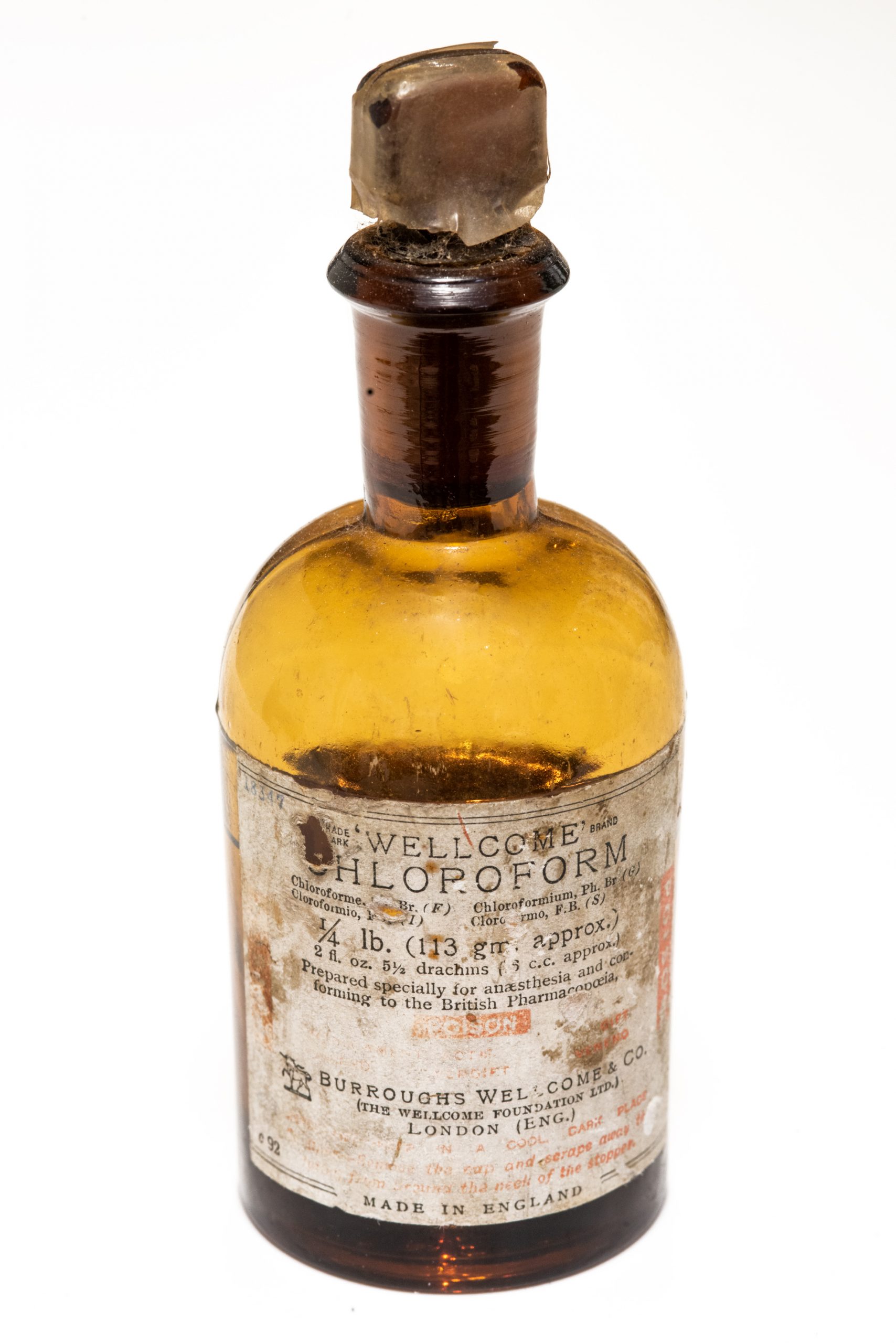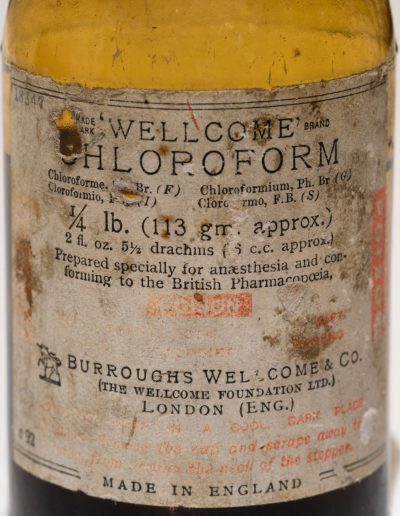Bottle of Chloroform
Glencoe Folk Museum
This brown glass bottle would have once contained chloroform, a substance which was used as an anaesthetic. In the nineteenth century, lots of different substances were being trialled as potential drugs to keep people asleep during surgery, both for pain management and to allow surgeons to conduct more complex, time-consuming surgeries. Hypnosis and acupuncture were the only other methods available at the time, and were very limiting.
Scottish obstetrician James Simpson was the first to successfully demonstrate the potential of chloroform, by trialling different doses on himself and colleagues! He was instrumental in helping to popularise the drug.
The introduction of chloroform reflects changing medical understandings and approaches to pain. However, it was met with some degree of suspicion, as it challenged people’s perception of pain, which was understood as a natural and inevitable bodily reaction.
Chloroform allowed longer and more complex surgeries to be performed, so that speed was no longer the main focus of surgery. In this way, it was a massive milestone in the development of modern surgery.
Associated Activities


